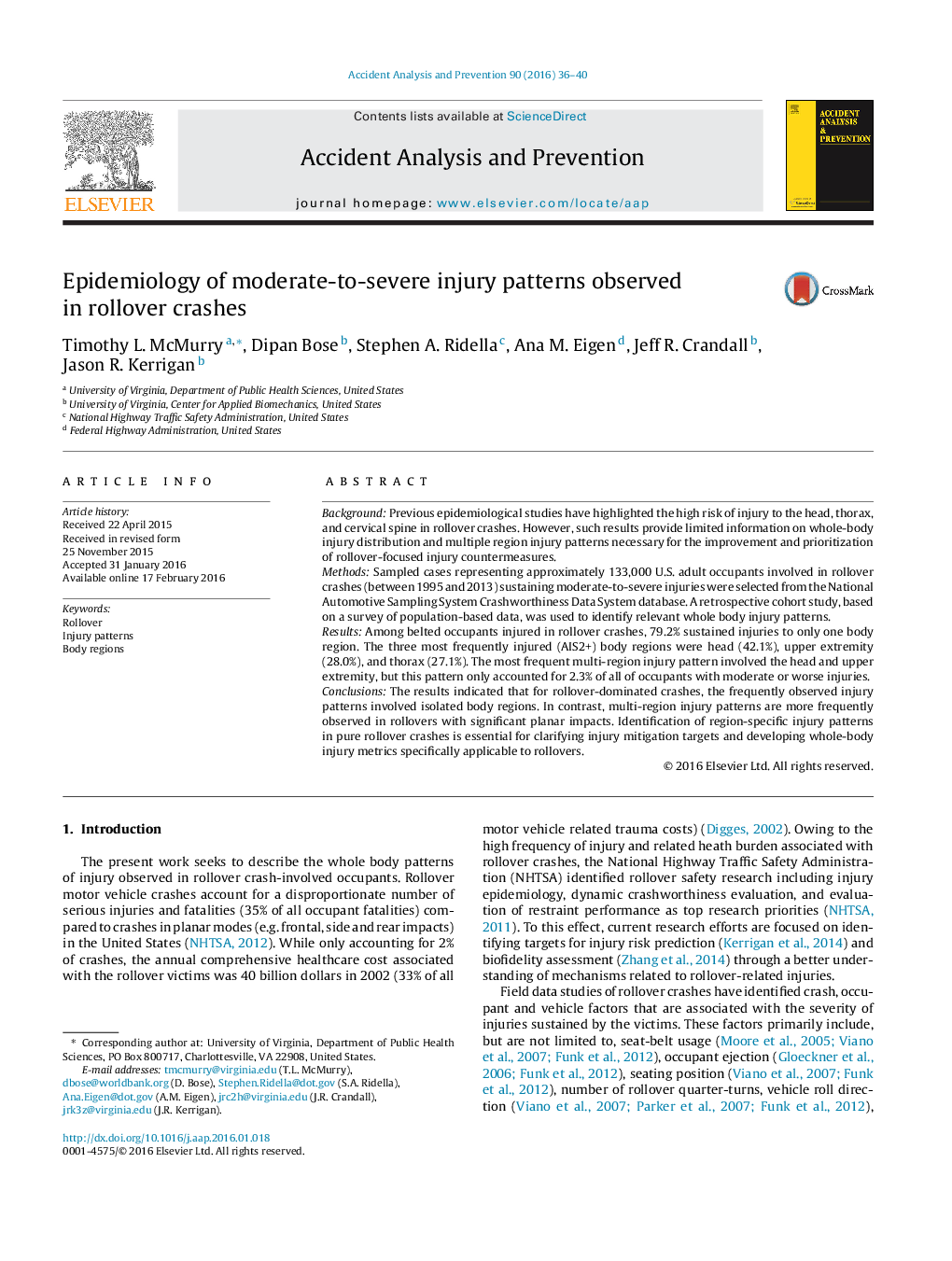| Article ID | Journal | Published Year | Pages | File Type |
|---|---|---|---|---|
| 572062 | Accident Analysis & Prevention | 2016 | 5 Pages |
•79.2% of injured occupants in rollover crashes have injuries to only 1 body region.•Thorax, spine, and head are the most common regions with serious injury.•Head and upper extremity is the most common multi-system injury pattern.
BackgroundPrevious epidemiological studies have highlighted the high risk of injury to the head, thorax, and cervical spine in rollover crashes. However, such results provide limited information on whole-body injury distribution and multiple region injury patterns necessary for the improvement and prioritization of rollover-focused injury countermeasures.MethodsSampled cases representing approximately 133,000 U.S. adult occupants involved in rollover crashes (between 1995 and 2013) sustaining moderate-to-severe injuries were selected from the National Automotive Sampling System Crashworthiness Data System database. A retrospective cohort study, based on a survey of population-based data, was used to identify relevant whole body injury patterns.ResultsAmong belted occupants injured in rollover crashes, 79.2% sustained injuries to only one body region. The three most frequently injured (AIS2+) body regions were head (42.1%), upper extremity (28.0%), and thorax (27.1%). The most frequent multi-region injury pattern involved the head and upper extremity, but this pattern only accounted for 2.3% of all of occupants with moderate or worse injuries.ConclusionsThe results indicated that for rollover-dominated crashes, the frequently observed injury patterns involved isolated body regions. In contrast, multi-region injury patterns are more frequently observed in rollovers with significant planar impacts. Identification of region-specific injury patterns in pure rollover crashes is essential for clarifying injury mitigation targets and developing whole-body injury metrics specifically applicable to rollovers.
